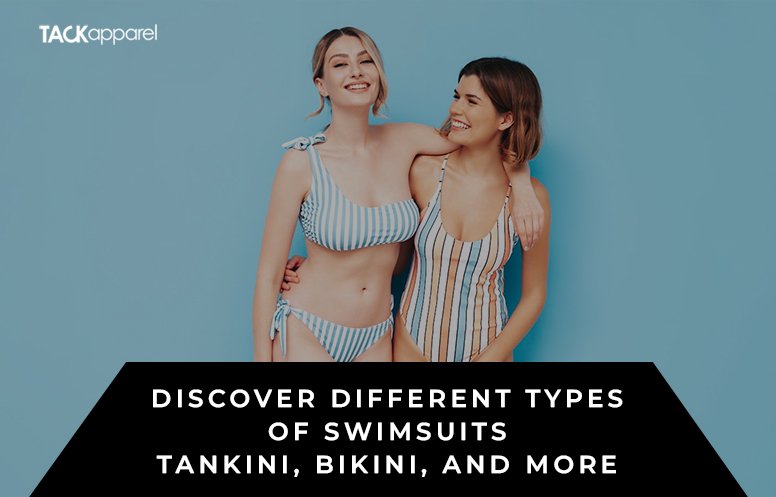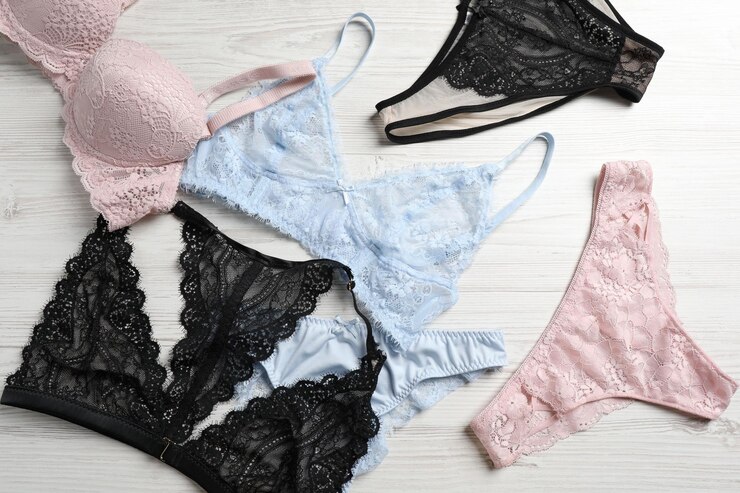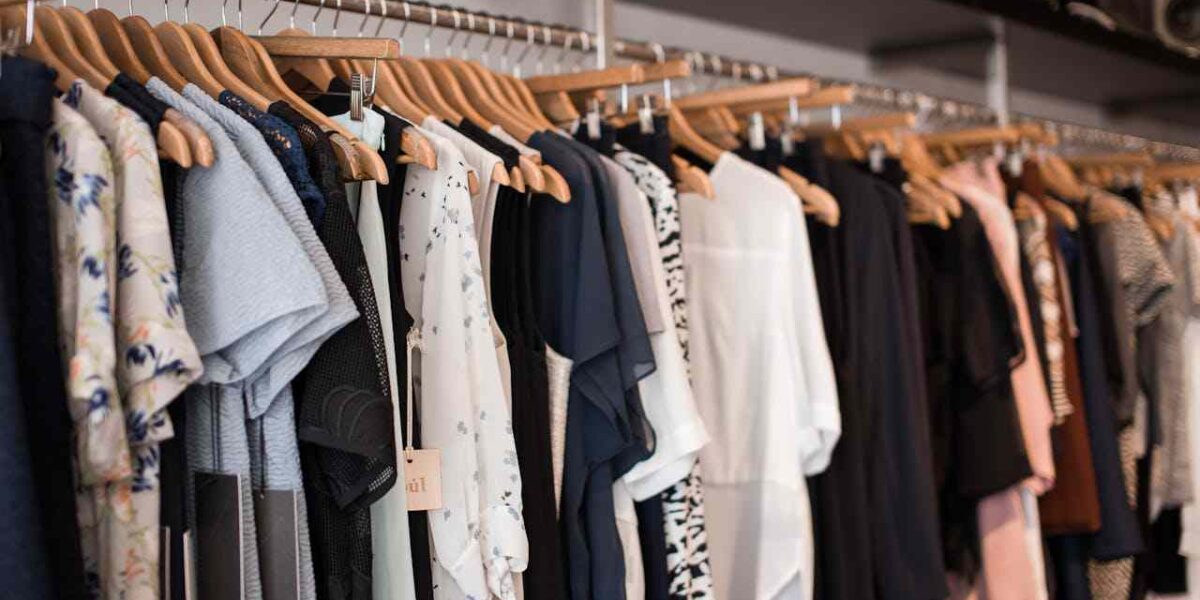Fun days of lounging at the beach or splattering in the pool are ahead. Having a swimsuit that gives you confidence and comfort is helpful, though, if you want to look summer-ready. But how can one choose which bikini to buy? You may try so many different types of women’s bathing suits, even though you might only be used to wearing bikinis or one-pieces. With so many possibilities, it might be difficult to decide which type of swimsuit to purchase. The different types of swimsuits, appropriate material, their care and maintenance, and how much they cost are listed below.
Swimsuit Styles
Several criteria determine your ideal type of swimwear, such as your personal style preferences. This can assist you in choosing between a one-piece suit, swimsuit bottoms, swim tops, or any combination of the above.
Swimwear can be worn around the pool, on the beach, or in other settings where it would be appropriate. If you decide to tan while wearing a bikini, keep in mind that the type of suit you choose will show through any tan lines you get. For example, different bathing suit styles’ bottoms provide more covering, but side-tie bikini bottoms will show off more of your legs.
There are sporty swimsuits and strappy ones with frills and ruching; traditional bikinis and chic pool dresses; flirtatious color-block swimsuits; and subdued flounce swimwear sets.
What are the names of the swimsuits?
Understanding the many types of bathing suit names is the first step in selecting the perfect bathing suit for each body type. In this guide, we cover all you need to know about the popular types of women’s bathing suits: swimsuit tops, swimsuit bottoms, one-piece bikinis, and two-piece tankini swimming suits.
Swimsuit Tops
Bandeau
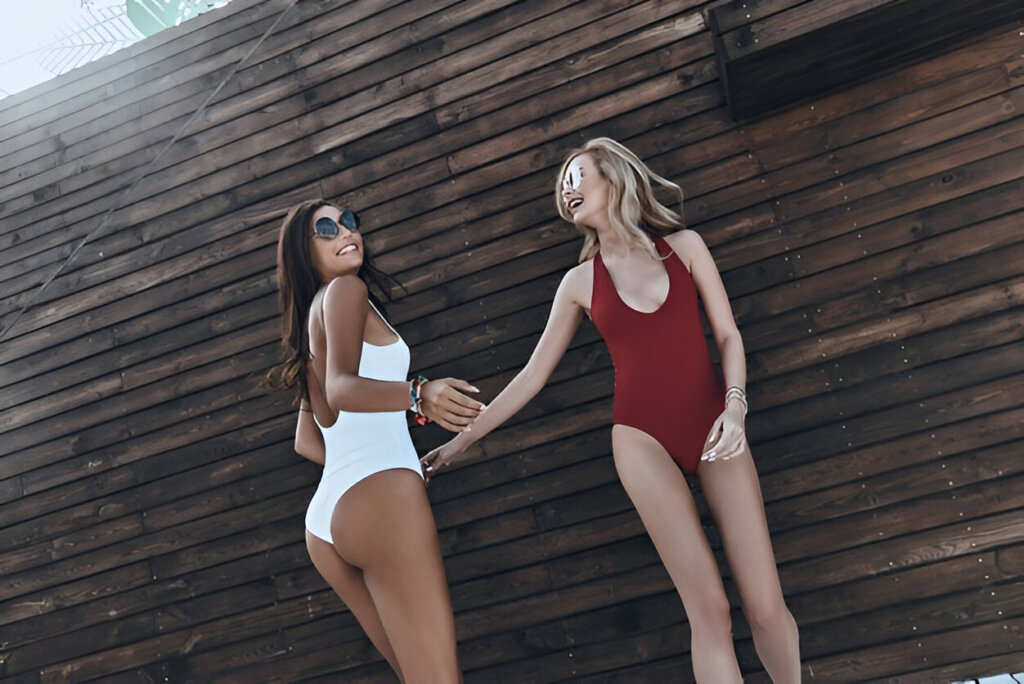
The name of this strapless bikini top comes from the way it resembles a ring of cloth around your breasts. A bandeau of different kinds of swimsuits is the ideal choice if you want to stay away from tanning lines. If you want to be extremely active while wearing your swimsuit, it’s better to stay away from this type because it lacks straps and isn’t the most supportive. To have the best of both worlds, you might also be able to discover a convertible design that lets you put the straps on and take them off as needed.
Halter Top
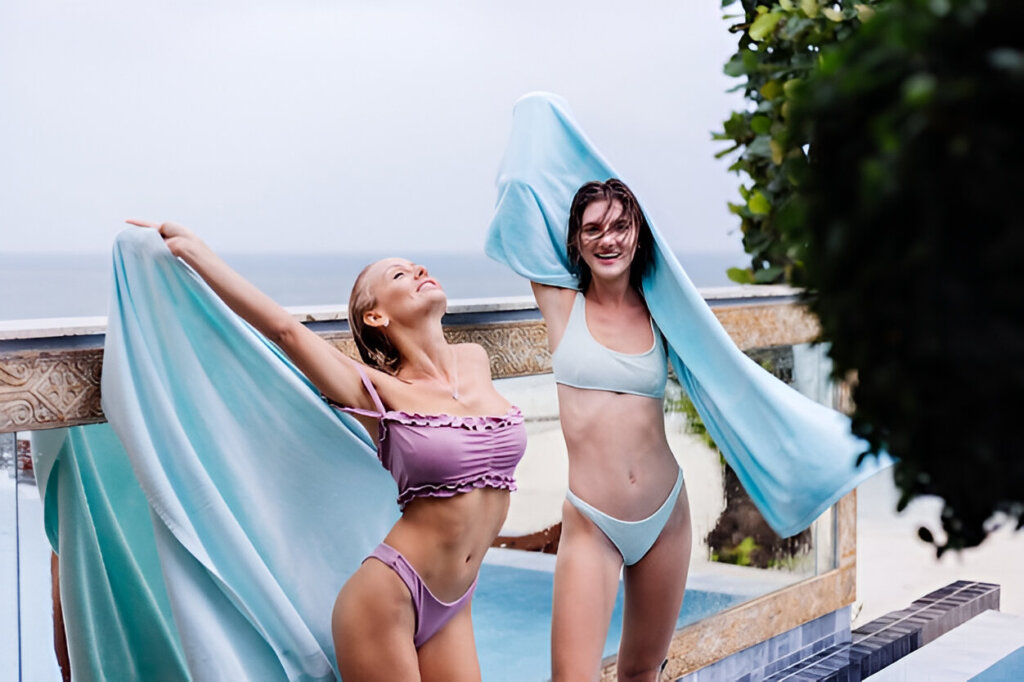
The kind of straps that tie behind the neck is known as a halter-top bathing suit. Discover the various cup types that Leonisa has to offer, including triangle, underwire, high neck, and more, that can be combined with halter top straps. Strap lengths on halter tops are simply adjustable for your comfort because they tie. Some women indeed have neck pain when wearing halter tops, particularly if the straps are tied excessively tightly. This frequently occurs as a result of your breasts’ weight being supported by your neck rather than your shoulders. If you often get neck pain, you might want to think about using traditional straps that will evenly distribute the weight over your shoulders.
High Neck
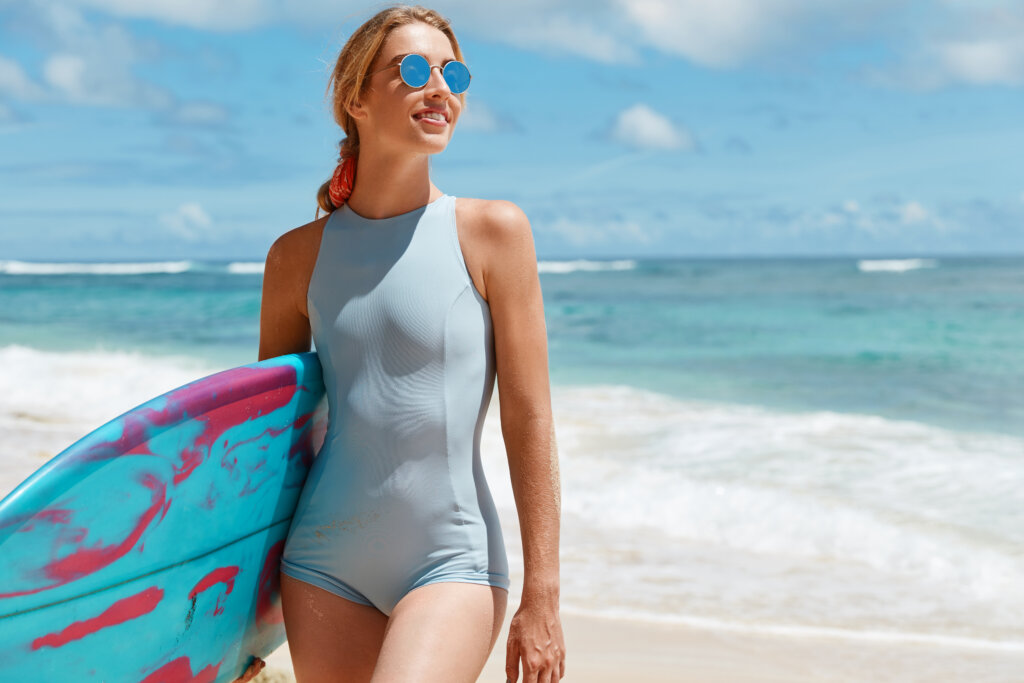
A larger cloth panel that reaches up towards the neck is a feature of this swimsuit type. In case you like a little extra coverage or dislike the cleavage that a triangle bikini top creates, a high-neck bikini will provide you with the desired coverage without compromising your stylish seaside appearance. Tall folks with slender torsos who want to visually abbreviate their upper body would look especially good in this design.
Scoop Bikini Top
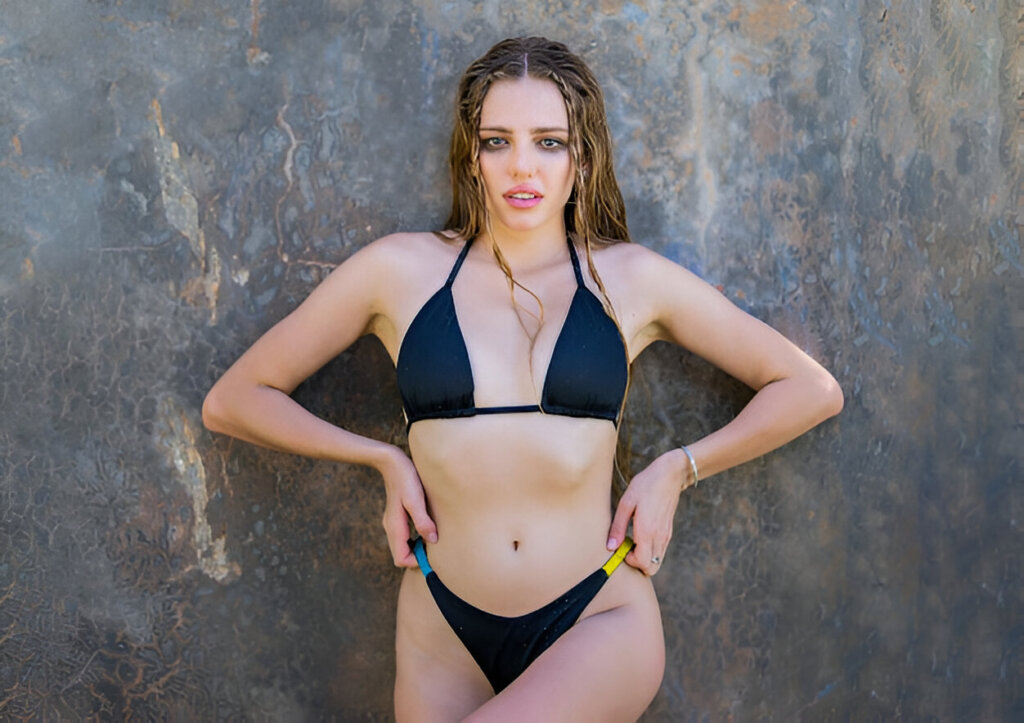
With their elegant, squared-off neckline that sits close to the décolletage for a polished, eye-catching appearance, scoop bikini tops stand out. You can wear the straps over your back for more support or straight for enhanced wearability. These tops are elegant and adaptable, thanks to their basic design.
Single-shoulder Top
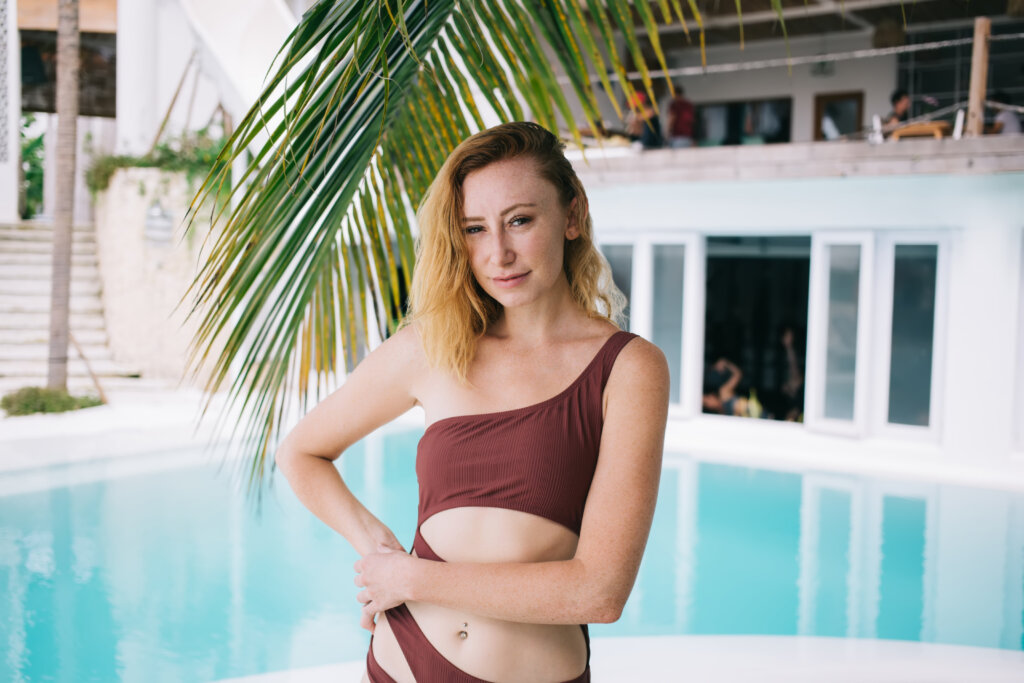
A seductive twist on classic triangle tops, one-shoulder bikini tops have an asymmetrical shoulder shape. The bikini top covers one shoulder, leaving the other bare for a peekaboo effect.
Triangle
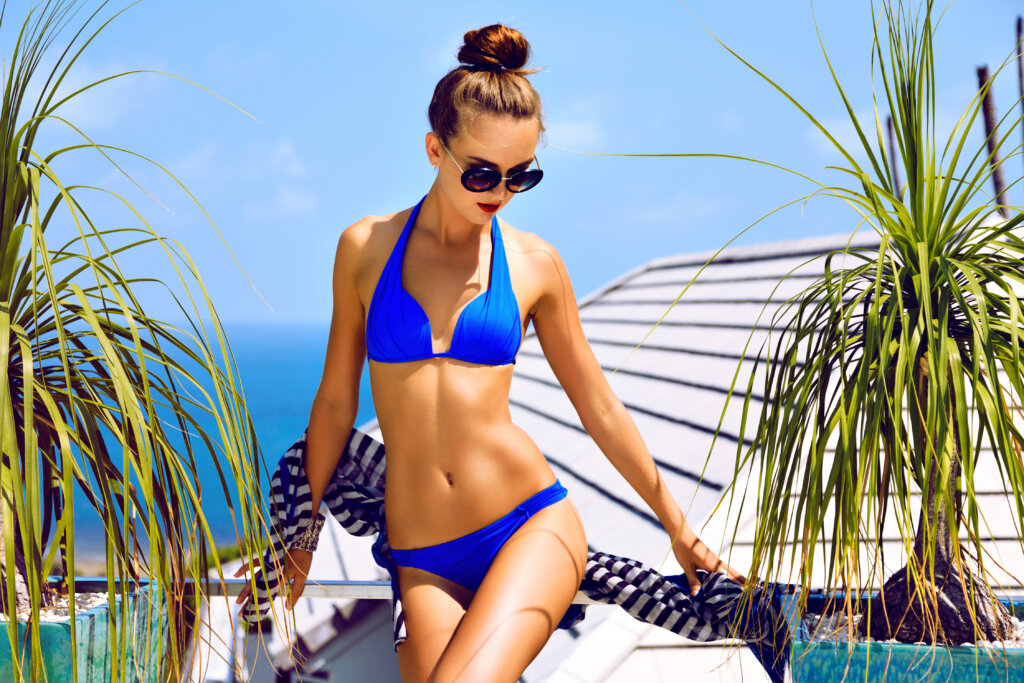
Triangle bikini tops, as the name implies, have triangle-shaped pieces of cloth that serve as the bra cups. These can vary in style, from padded to unpadded. Though some different types of swimsuits, such as string bikinis, have wider straps that fasten with a clasp, others may have thinner straps that can be knotted around the neck and body. For people who want to flaunt their smaller chests, triangle bikini tops are especially attractive. Although they come in larger sizes as well, some women feel that wearing a more supportive bikini top is more comfortable for them if they have larger busts.
Underwire
Bikini tops with underwire provide additional support and structure. These women’s types of bathing suits are an excellent option whether you want to accentuate a smaller bust or give a larger chest more structure support because they frequently have extra padding. On the other hand, there are unpadded and unlined styles. Although there are many different styles of underwire bikinis, most of them do contain two distinct cups that resemble a bra’s structure. Similar to a typical bra, improperly designed bathing suit ideas may cause the underwire to poke, so choose high-quality items from our selection.
Wrap Tops
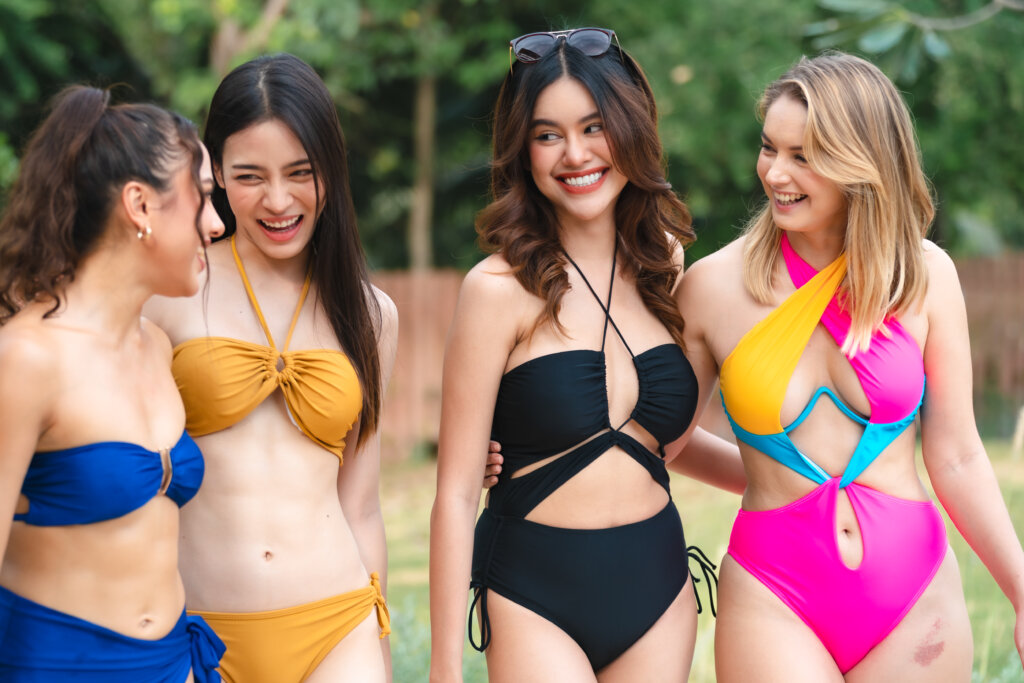
The fabric of our wrap tops spans over the back or wraps around the neck, and they have long sleeves. You may personalize the coverage to wear halter tops or over one shoulder thanks to the fully adjustable construction.
Swimsuit Bottoms
Bikini
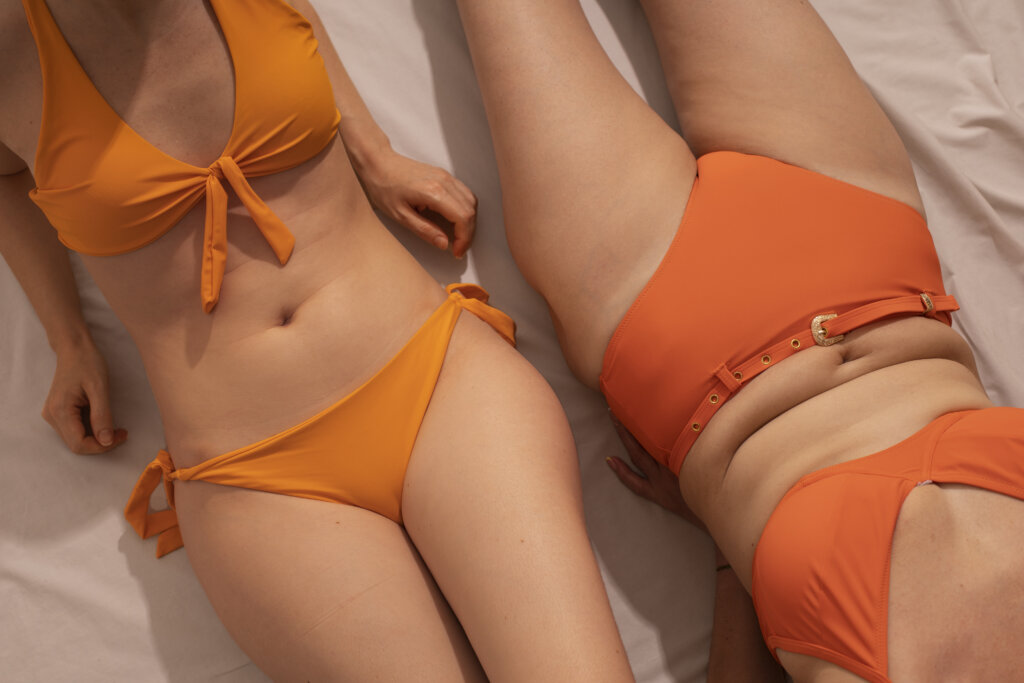
These types of shorts are a traditional style that covers the entire cheek area while having a low-rise waist that bares the stomach. This is the cut to choose from if you’re searching for classic bikini pants. If you want to tan but still appear put together at a family-friendly beach, bikini-cut bottoms are a great option.
Cheeky
Go against swim shorts and flaunt your booty with a pair of cheeky bottoms if you’re feeling particularly bold. The legs are even more narrowly cut to accentuate your cheeks, giving them a similar appearance to different types of panties. They are ideal for tanning, but perhaps not for family-friendly beaches!
High Cut
Leg openings on high-cut bottoms extend farther up the thighs, setting them apart from high-waisted bottoms. This style gives the appearance of longer, slimmer legs. To give the appearance of a longer torso, the waistline may also be softly slanted downward in the middle. Because of this, a lot of people with short legs and/or torsos adore this style.
Straight waisted
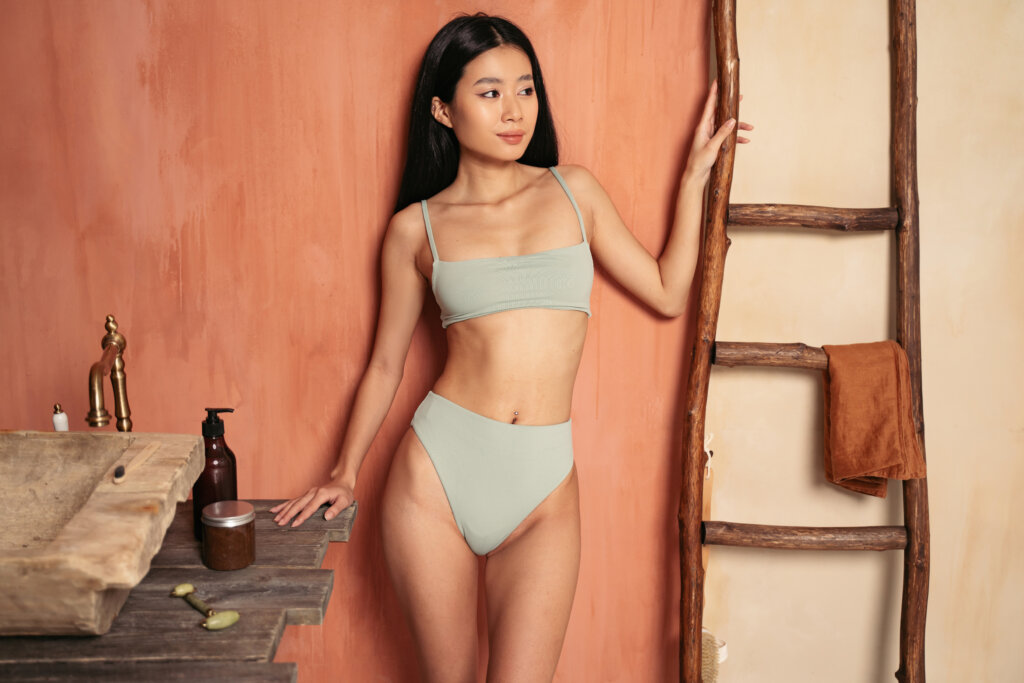
For people who prefer to cover their lower abdomen and flaunt their legs, this retro style is ideal. For a supportive and attractive appearance, high-waisted swimsuit bottoms fall at or slightly below your belly button. High-waisted bikini bottoms are worth looking at if you want to flaunt your flesh while maintaining some stomach control.
Swimming Skirt
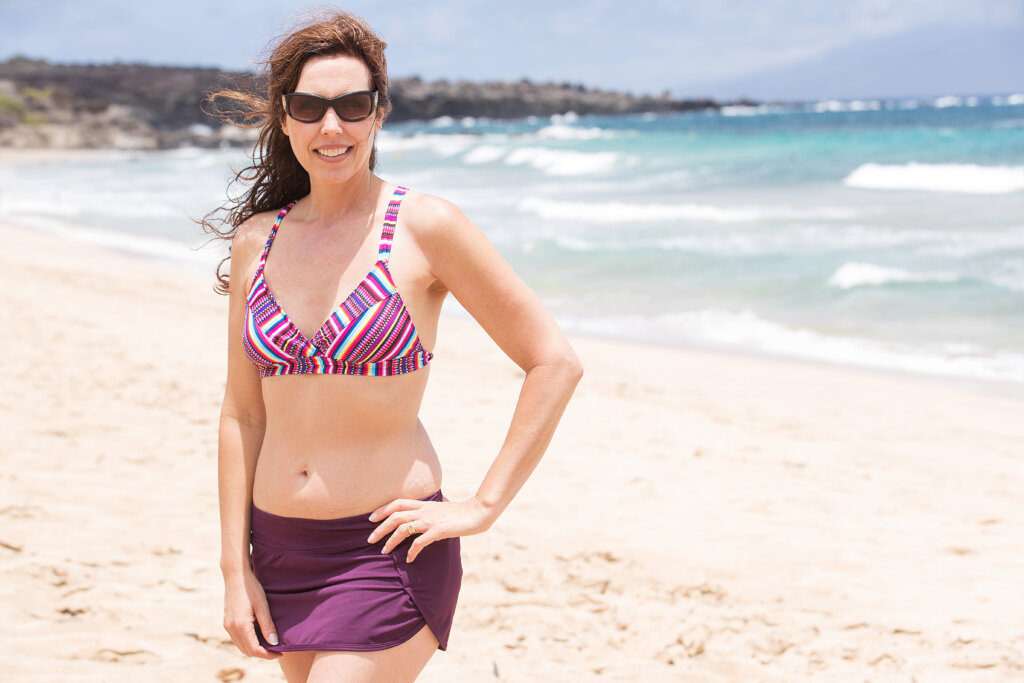
Consider this bathing suit bottom as a swimming version of a skort—it is made of swimsuit material and is sewn on top of a standard swimsuit bottom. This design is ideal if you want to show off a little more of your legs but don’t want to bother with having to take off your swimsuit each time you have to use the restroom.
Swimming Briefs
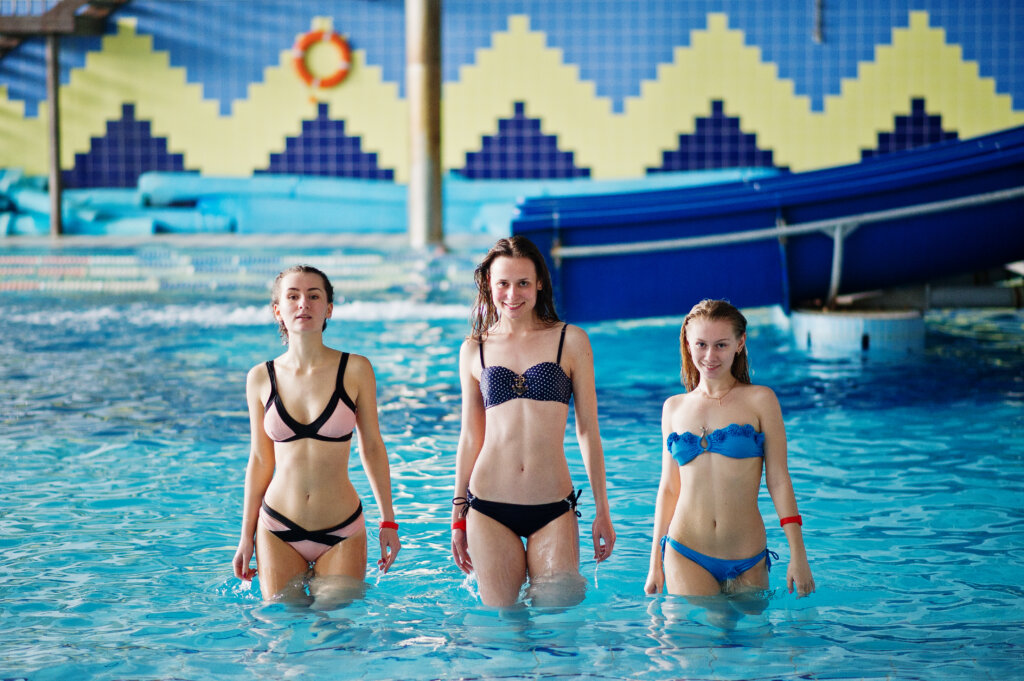
Conversely, you may be more interested in longer lengths of shorts with more coverage at the bottom than the top. Then, you could want to think about wearing swim shorts, which end at the top of the thighs. The waistline of swim shorts is typically low-rise or mid-rise, and the legs come in a range of lengths, from minimal to maximal covering. If you need something secure to wear and will be in and out of the water frequently, swim shorts are a fantastic option.
Trendy Hipster
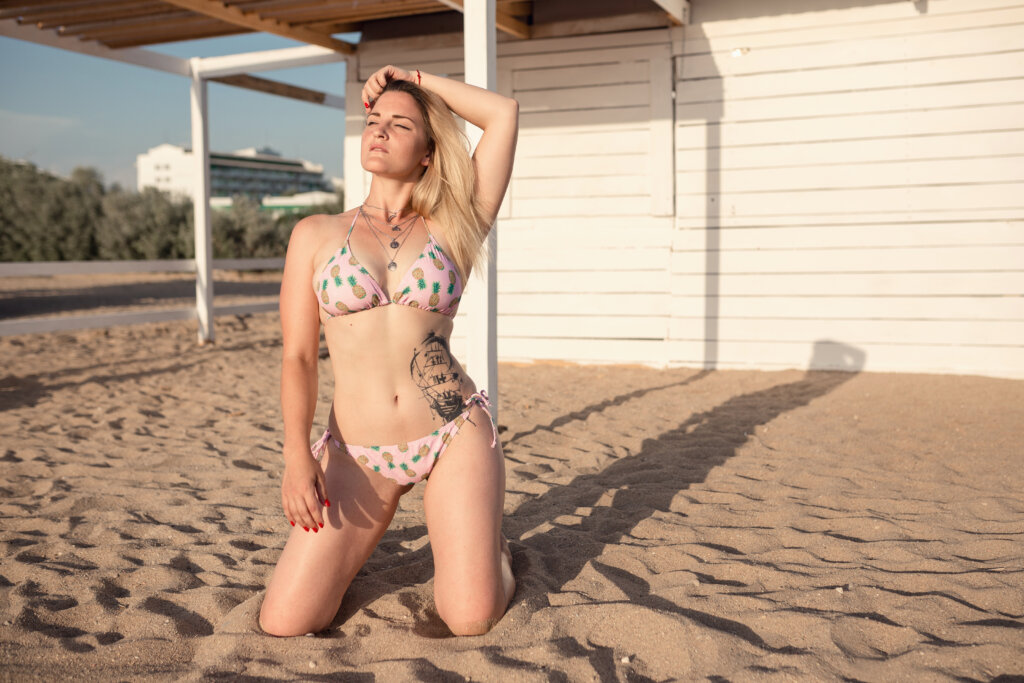
Similar to bikini bottoms, these bottoms protect your cheeks, but they also have a slightly thicker waistband that hits a little higher for added security when getting in and out of the water. Stated differently, hipster bikini bottoms offer a fantastic middle ground between high-waisted and bikini bottoms.
One-Piece Swimsuits
One-Piece bikini
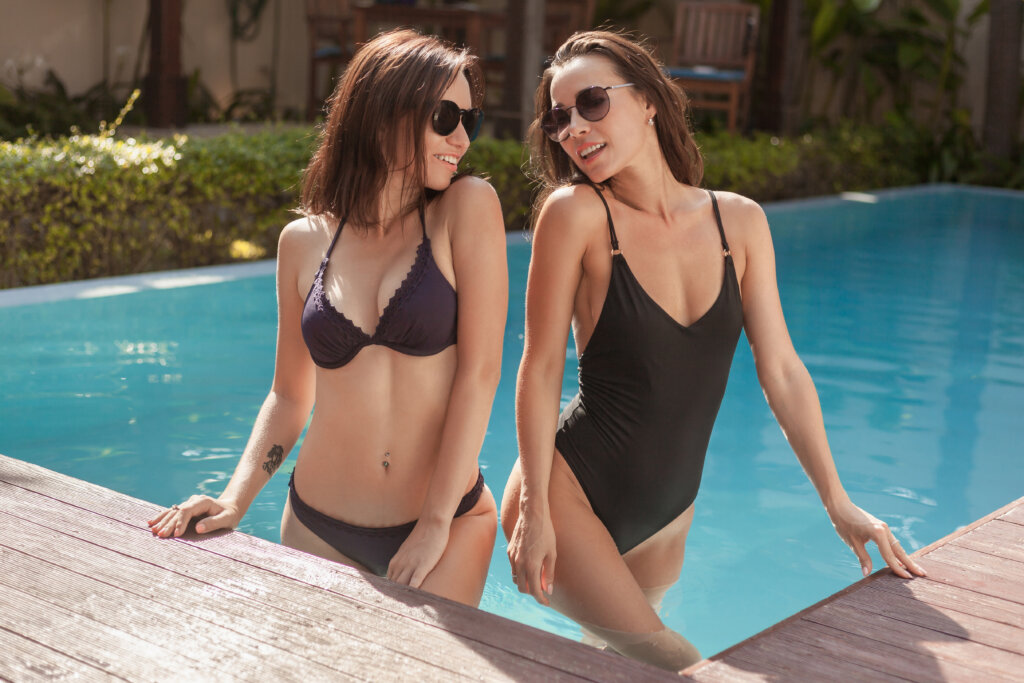
Although they are becoming less and less frequent, one-piece swimsuits are still very common. Covering that is modest but highly practical for unhindered swimming. Additionally, it gives you additional support in the bust and stomach areas and slims down your shape.
Monokini
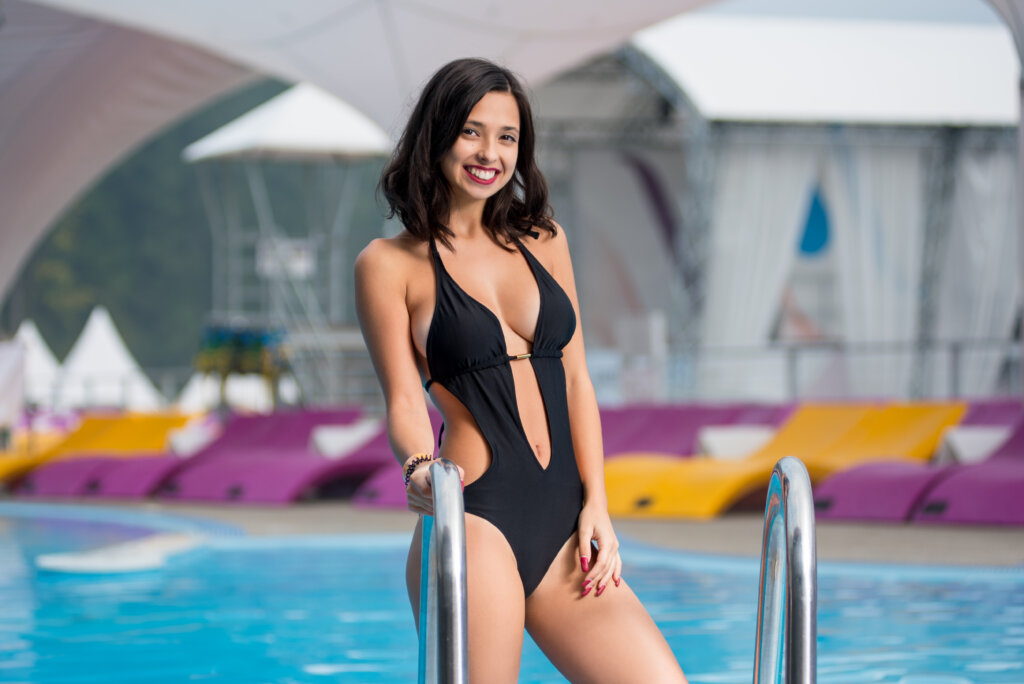
A monokini is a cross between a bikini and a one-piece swimsuit; it includes cutouts around the belly and back that give it the appearance of a bikini. A small strip of material connects the monokini’s top and bottom portions. For those who want to choose between a bikini and a one-piece, there is the monokini.
Cutouts and Ruching
Despite their apparent differences, these two design strategies work together to produce a silhouette that is both attractive and slimming. Ruching is the process of collecting or pleating the fabric over the monokini’s middle to give the appearance of a smaller waistline. Conversely, carefully placed cutouts direct attention to more attractive parts, like the tops or sides of the ribs. To enhance the illusion, these cutouts can be secured with mesh or kept open. Unlike bikinis, which do not have enough area for these techniques, monokinis have more room thanks to the additional fabric.
Two-Piece Swimsuits
Bandini
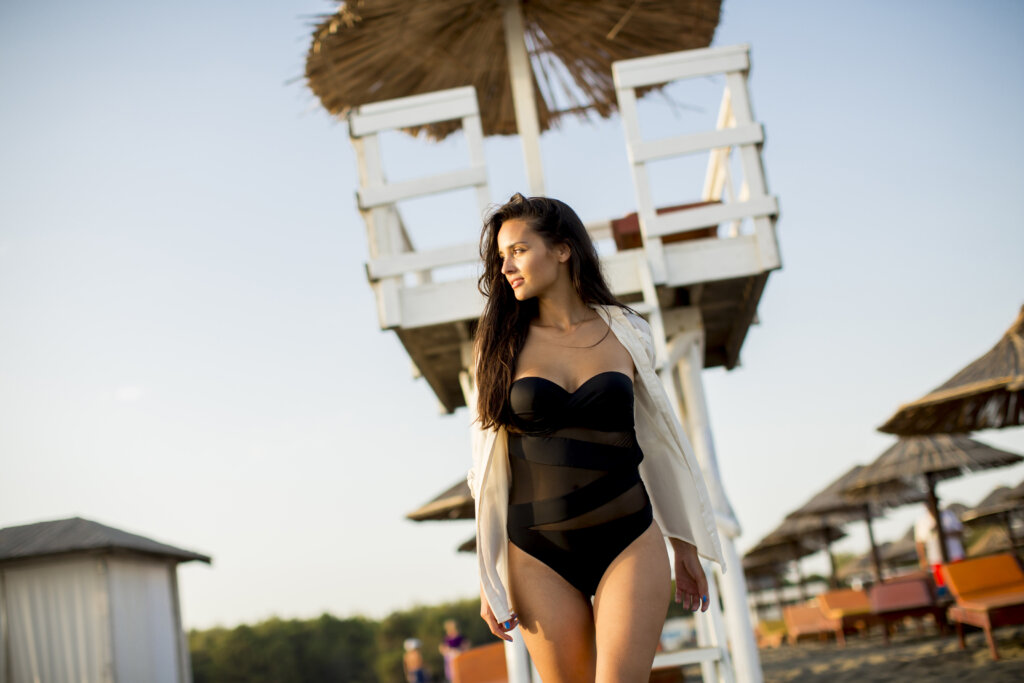
A bandini is an ideal swimsuit for any body type with a strapless bandeau top. It is similar to a bikini. If you want to keep your shoulders from getting tan lines, go for this option. It is appropriate for people who desire a more secure top without straps or for individuals with smaller busts.
Midkini
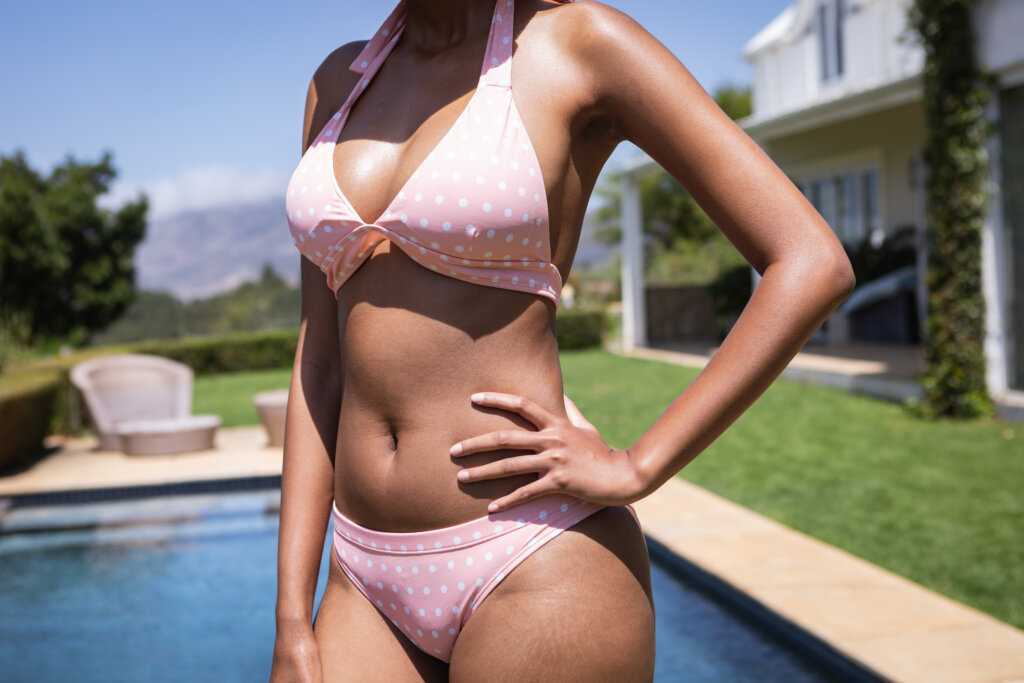
A midkini is a two-piece bikini that matches body types for bathing suits with less exposed skin. If you want less coverage than a one-piece but more than a bikini, this is an alternative.
Tankini
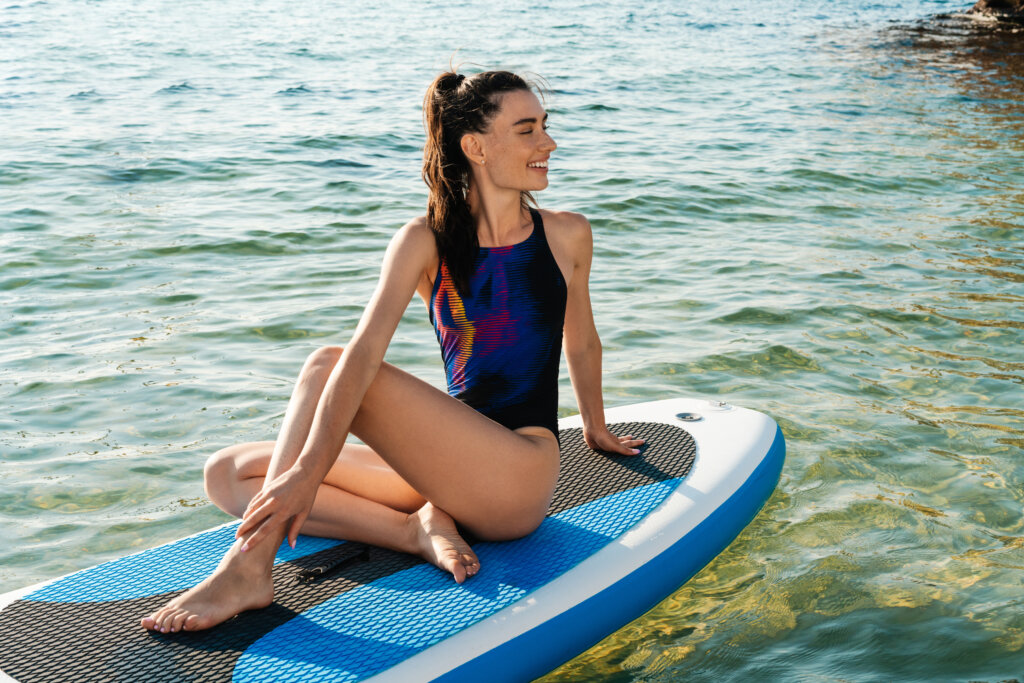
A tank top and bikini bottom are combined to create a tankini, a two-piece swimsuit. In contrast to the more exposed coverage of a standard triangular bikini top, a tankini top has more fabric to conceal the midriff and breasts. In addition, the tank form offers more coverage across the hips and stomach than a traditional bikini bottom.
How Much Does it Cost to Make a Swimsuit?
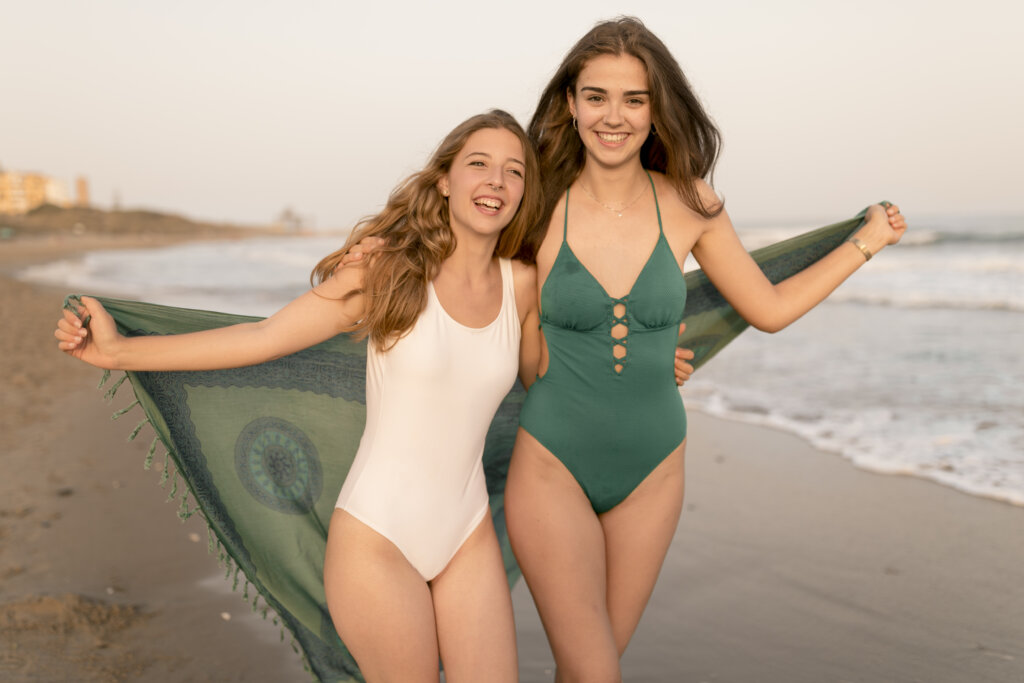
How to start a swimwear line and how much does it cost? There is no one-size-fits-all cost for creating, designing, and marketing a swimsuit. Each swimsuit is unique, and the model will determine the price. A bikini and a full piece, for instance, won’t cost the same. After that, you also need to consider the fabric or substance they are made of and how they will be accessorized.
A swimwear manufacturers process doesn’t stop there. Apart from everything described above, we also need to consider the pieces’ sizes: are they produced, one-of-a-kind, or some kind of clothing akin to a stylish swimsuit? Remember that the pricing of these swimsuits will depend on the kind of customer base you wish to pursue with your enterprise.
An item created by hand for this marketing is estimated to cost between $30 and $50. Everything is dependent on the different kinds of swimwear materials they employ. However, depending on labor costs, design work, and creativity, this differs from nation to nation.
Which Material is Best for Swimwear?
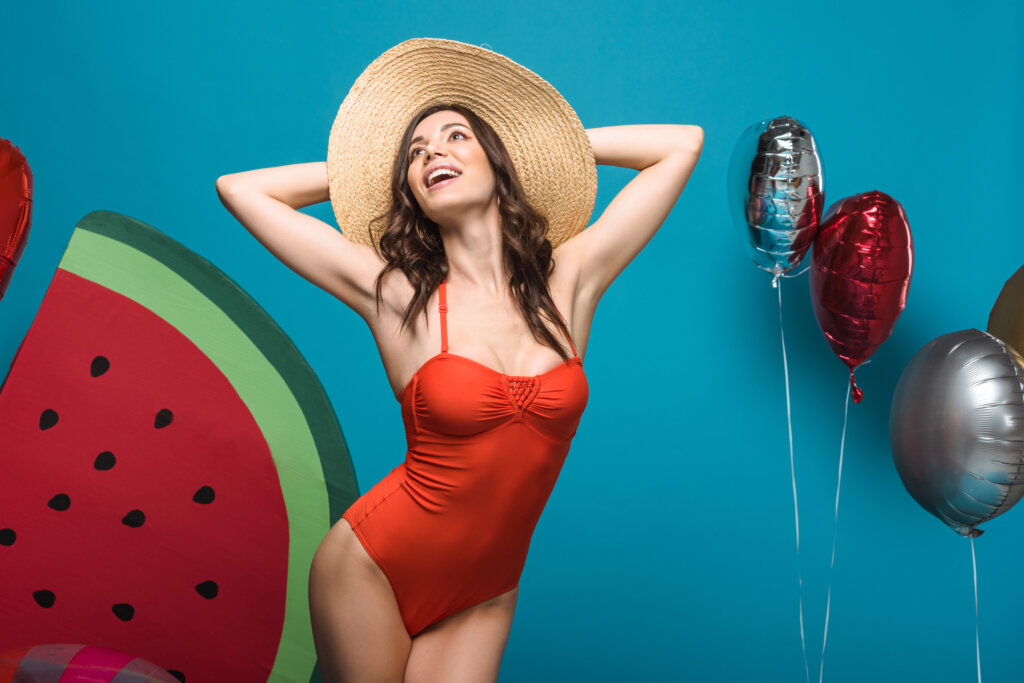
When it comes to swimwear, quality is crucial. Even though it could be alluring to skimp on different types of fabric swimwear, you want a durable, high-quality item. What you will get if you buy inexpensive swimwear is weak, cheap fabrics that won’t withstand swells and a fit that stretches out over time.
NYLON
Swimwear is typically made of nylon or polyamide. The capacity of nylon to withstand water and dry rapidly is what makes it a fantastic fabric for swimwear. Nylon swimwear is incredibly comfy and figure-flattering. Stretchy and figure-hugging fabric can be achieved with the correct blends, a desirable feature for swimwear. Working with nylon’s slight gloss and luster is a unique experience.
POLYESTER
Polyester is renowned for being comfortable, durable, water-resistant, and tends to dry quickly. It is also naturally resistant to UV radiation and resistant to the effects of chlorine. Nylon works well for any clothing worn by the pool or beach, not just swimwear.
ELASTANE
While discussing swimwear fabric compositions, you’ve probably heard of materials like Lycra or Spandex. However, the common, precise name for those materials is elastane. Made entirely of a chemical substance called polyurethane, it is a synthetic material. This substance can aid with trimming, elasticity, and other aspects of swimsuit textiles.
PBT, or Polybutylene Terephthalate
PBT is a plastic polymer that exhibits elasticity. It is light and delicate to the touch but feels relatively stiffer than that. This material is a great option for competitive swimwear parts since it can move freely in the water when properly treated with a dull or matte finish.
Nylon and elastane are the best materials to search for in swimwear. These materials stretch perfectly and naturally dry quickly. They provide a comfortable, compressive fit for your swimsuit, so you can dive, swim, and paddle all day. The materials used in Tack Apparel may move with you at every step. A high-quality swimsuit composed of high-quality fibers can take you further for the regular wave chaser or underwater enthusiast—without requiring any fussing or readjusting.
How Can I Pick the Ideal Sports Swimwear?
Everything from how you feel in your suit to how you perform can be altered with the right sportswear. The ideal bathing suit for your activity will rely on a variety of criteria, including your level of movement, desired coverage, and amount of support. One bikini top or one-piece will probably be a better option than the other, depending on the sport or degree of intensity. Think about the following when choosing your swimwear:
What is the Activity’s Intensity Level?
Wearing a racerback one-piece or a rashguard with bikini bottoms is recommended for higher-impact water sports, including windsurfing, surfing, and lap swimming. With their compressive, performance-ready fit and ability to stay in place throughout more vigorous action, these alternatives provide you with greater sun protection. You can wear pretty much any one-piece or two-piece bathing suit you feel most comfortable in when participating in lower-impact water sports like kayaking, paddleboarding, and casual swimming.
What Level of Coverage is Desired?
While you’re working it out on the water, are you more concerned with staying out of the sun or with keeping everything covered? Or would you like a little bit of both? The swimsuits for different body types, such as one-piece swimsuits, bikini tops, and bikini bottoms, come in a variety of cuts and levels of coverage to fit every body type. Choose swim shorts or bikini brief-inspired bottoms if you’d like a bit of extra cheek coverage. For the girls, halter tops, high-neck bikini tops, and tankinis are excellent choices if you want a little bit more coverage. Additionally, you can match any of our swim bottoms—from high-waisted bikini bottoms to sun shirts—with a rashguard or sun shirt worn over any of our bathing suit tops.
Which Style is Your Favorite?
When it comes to selecting a one-piece swimsuit, bikini top, or bikini bottom that complements your style, there are no wrong answers. For casual or competitive swimming, comfort should always come first. Try on items that fit well, look nice, and don’t need much time to adjust. The bathing suit styles that make you feel most confident are the greatest ones.
To What Extent do You Need Upper Support?
Does your team have any wire at all or are you underwired? One bikini top may function better than the other, depending on your preferences for support and how much of a stay-put factor you need to move freely. Your best option for a more supportive bikini top is a wired halter, high neck, or scoop neck top.
Search for a bikini top with two or one hidden underwire for maximum support and a snug fit. If a bikini top isn’t your style, Before you enter the water, ensure that your swimsuit—whether it’s a one-piece or a bikini top—has shoulder straps that can be adjusted to keep the girls in place and out of the way.
FAQs
What Distinguishes Swimwear from Swimsuits?
The primary distinction between swimwear and swimsuits is the portion of the body that each covers. Traditionally, a swimsuit is a one-piece outfit with straps across the shoulders, covering the groin and upper body. A two-piece bikini or tankini as well as traditional one-piece swimsuits can all be referred to under the umbrella word “swimwear.”
Why Wear a Cover-up with Your Swimsuit?
A cover-up for your swimsuit has functional and decorative benefits. It offers shade from the sun, modesty when moving from the beach or pool, and a fashionable accent to your swimsuit set.
How can I Prolong the Life of my Swimsuit by Saring for it?
Proper care can make all the difference in preventing different types of swimming costumes from fading. This is how you clean a swimsuit.
- Try washing your hands: hand wash in cold water with a small amount of detergent; these methods are gentler on the fabric and preserve its suppleness.
- If necessary, wash in a machine. We understand that not everyone has the time to hand-wash their swimwear. Make sure to use cold water, the softest cycle, and toss the pieces inside a lingerie bag. To prevent hooks from catching on anything else, always tighten them.
Conclusion
Now you know everything you need about different types of bathing suits, whether your plans involve lounging on the beach, engaging in thrilling water sports, or attending a pool party.
The types of swimsuits for women from Tack Apparel have styles that will suit all tastes, including trendy one-shoulder silhouettes, adjustable tie patterns, and safe halter tops. Fit and coverage can be tailored with features like adjustable straps and detachable padding.
During beach days and pool parties, our fashionable, practical swim shirts block 98% of harmful UV rays with a quick-dry, chlorine-resistant fabric that offers UPF 50+ protection from the sun.

